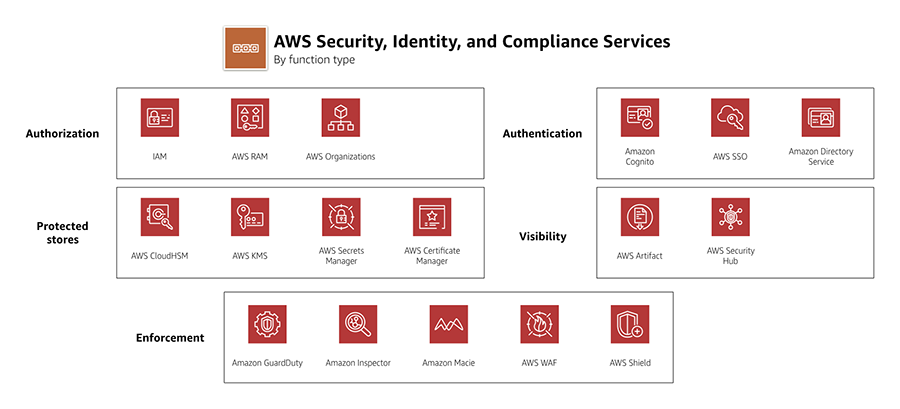AWS Resource Access Manager – RAM
- AWS Resource Access Manager – RAM helps secure sharing of the AWS resources created in one AWS account with other AWS accounts.
- Using RAM, with multiple AWS accounts, a resource can be created once and made usable by those other accounts.
- For an account managed by AWS Organizations, resources can be shared with all the other accounts in the organization or only those accounts contained by one or more specified organizational units (OUs).
- Resources can also be shared with specific AWS accounts by account ID, regardless of whether the account is part of an organization.
RAM Benefits
- Reduces operational overhead
- Create a resource once, and then use AWS RAM to share that resource with other accounts. This eliminates the need to provision duplicate resources in every account, which reduces operational overhead.
- Provides security and consistency
- Simplify security management for the shared resources by using a single set of policies and permissions.
- Provides visibility and auditability
- AWS RAM provides comprehensive visibility into shared resources and accounts through the integration with CloudWatch and CloudTrail.
RAM vs Resource-based Policies
- Resources can be shared with an Organization or OU without having to enumerate every one of the AWS account IDs.
- Users can see the resources shared with them directly in the originating AWS service console and API operations as if those resources were directly in the user’s account.
- Owners of a resource can see which principals have access to each individual resource that they have shared.
- RAM initiates an invitation process for resources shared with an account that isn’t part of the organization. Sharing within an organization doesn’t require an invitation and is auto-accepted.
RAM Supported Resources
- AWS App Mesh
- Amazon Aurora
- AWS Certificate Manager Private Certificate Authority
- AWS CodeBuild
- Amazon EC2
- EC2 Image Builder
- AWS Glue
- AWS License Manager
- AWS Migration Hub Refactor Spaces
- AWS Network Firewall
- AWS Outposts
- Amazon S3 on Outposts
- AWS Resource Groups
- Amazon Route 53
- Amazon SageMaker
- AWS Service Catalog AppRegistry
- AWS Systems Manager Incident Manager
- Amazon VPC
- AWS Cloud WAN
AWS Certification Exam Practice Questions
- Questions are collected from Internet and the answers are marked as per my knowledge and understanding (which might differ with yours).
- AWS services are updated everyday and both the answers and questions might be outdated soon, so research accordingly.
- AWS exam questions are not updated to keep up the pace with AWS updates, so even if the underlying feature has changed the question might not be updated
- Open to further feedback, discussion and correction.
References
AWS_Resource_Access_Manager

